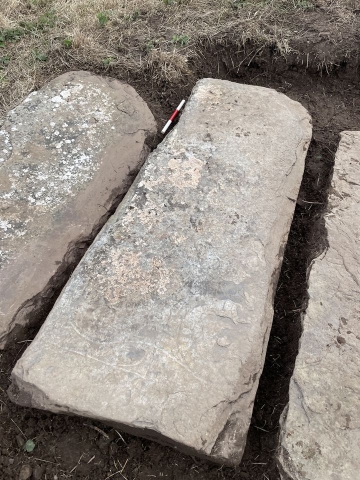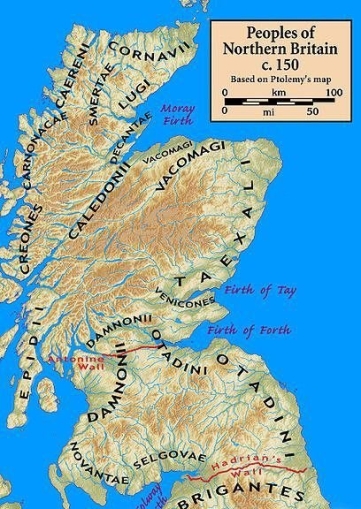Carved Pictish Stone Discovered in Caithness

A carved Pictish stone has been discovered in a graveyard at Ulbster, Caithness. It is believed to show early examples of Pictish art possibly dating to between the 5th and 7th centuries. It was found by a woman researching her family history and has been removed to be cleaned and studied. The Picts created intricately decorated standing stones, which can be found throughout Scotland, and also constructed impressive hill forts to defend themselves against rival tribes and invaders.
The newly discovered stone was found in the same burial ground attached to St Martin's Chapel in Caithness in which the well known Ulbster Stone was found in 1770. The Ulbster Stone has a significant number of carved symbols. The symbols on the newly discovered stone have been weathered and so not as clear as the first Ulbster stone. However, by the use of photographic techniques the symbols can be highlighted. The early date of this stone is hoped by archaeologists to shed new light on the development of Pictish symbols.
New Pictish stones keep being discovered, each one adding to the knowledge of their art and culture. Unfortunately, very little written material from the Picts survives and the meaning of the symbols lost. The newly discovered stone is being managed now by Yarrows Heritage Trust and information on the Saint Martin Pictish Stone at Ulbster as it is now known is on their website. They plan to offer the stone to Thurso Museum (North Coast Visitor Centre) to sit alongside the original Ulbster Stone.
The name ‘Pict’ comes from the Roman name Picti, meaning “painted people” and it is traditionally thought to refer to the practice of tattooing or body painting. Early medieval sources point to the Pictish language having been an Insular Celtic language, closely related to Brittonic. It is thought likely that the Picts were the descendants of native peoples of Scotland such as the Caledones or Vacomagi who lived in modern-day northern and eastern Scotland around 1,800 years ago. The Picts never went away and were crucial in forging the country of Scotland known today and many Scottish people are likely to be related to the Picts.
Image above: Newly discovered Saint Martin Pictish Stone courstesy of Yarrow Heritage Trust.
Image below: Tribes of Scotland as laid down by the Roman geographer Ptolemy (Creative Commons)






